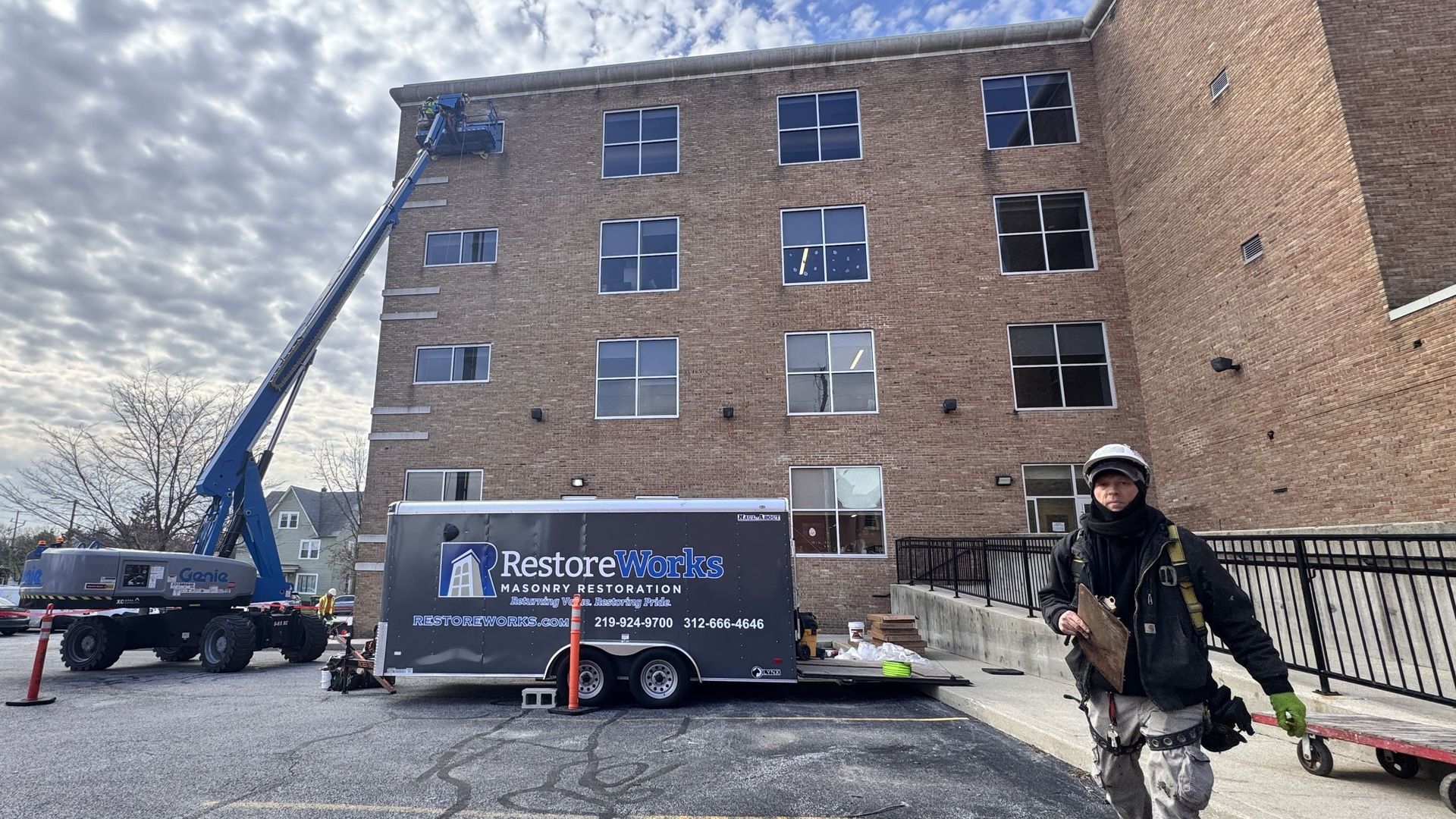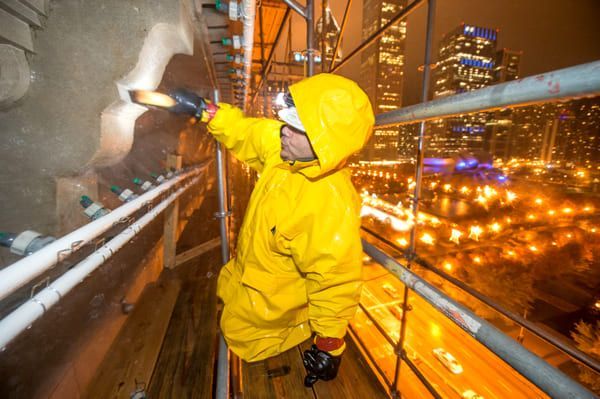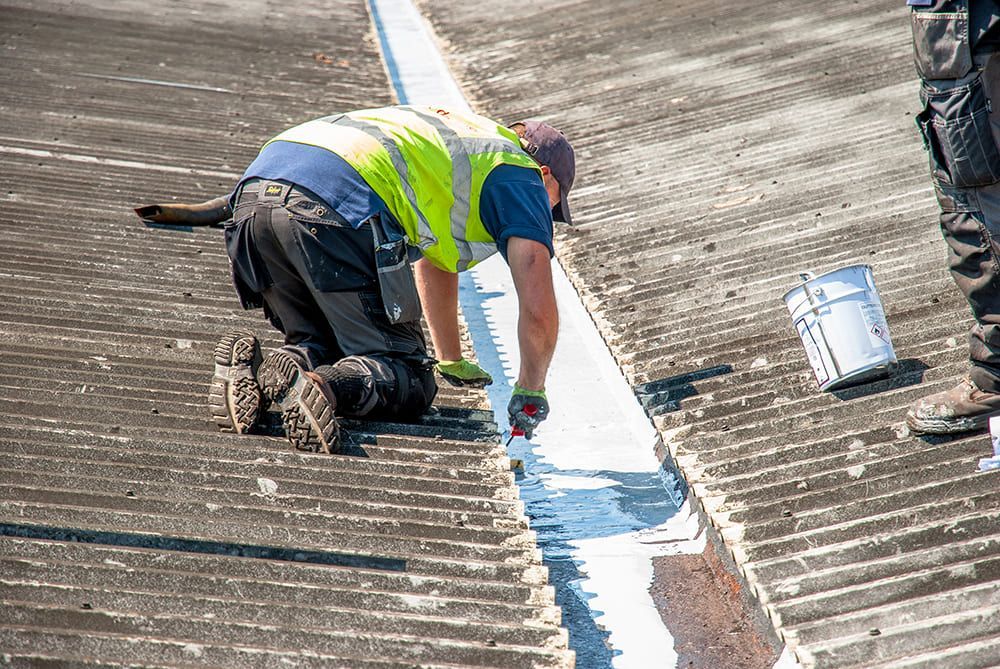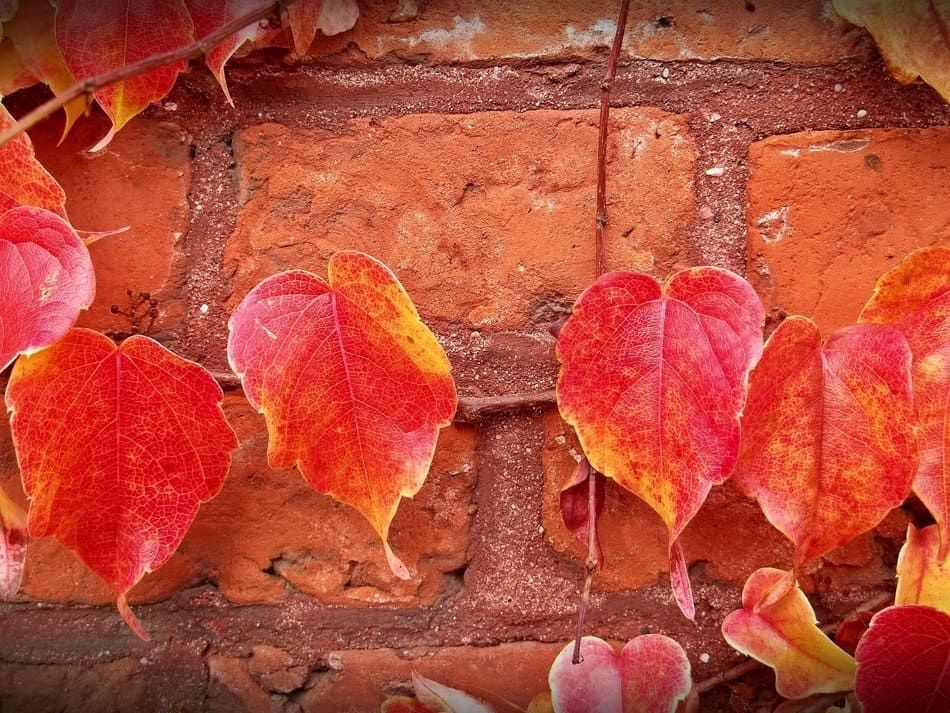When winter hits the Midwest, construction projects don’t necessarily come to a halt. But for masonry restoration, cold temperatures bring unique challenges. At RestoreWorks, we often get asked by project managers, architects, and facilities professionals: Can we move forward with masonry work during Chicago’s colder months? The short answer is: it depends.
In this article, we’ll break down what masonry tasks can proceed in winter, what should wait for warmer weather, and how to plan ahead to avoid costly delays or compromised quality.
The Problem with Cold Weather and Masonry
Masonry materials are heavily influenced by temperature and moisture. According to Sika, sealants and repair materials should only be applied when surfaces are clean, dry, and temperatures are above 40°F (4°C) and rising to guarantee proper adhesion and curing. When temperatures fall below freezing, moisture within materials can freeze, causing both structural weakening and visible surface damage.
According to the Masonry Advisory Council, mortar that freezes within the first 24 hours after placement may lose up to 50% of its ultimate strength, significantly increasing the risk of premature failure.
What Masonry Work Can Be Done in Winter?
Despite the risks, several types of commercial masonry restoration in Chicago can still be performed safely during winter, provided proper precautions are taken.
1. Emergency Repairs and Structural Stabilization
If a façade is at risk of failure or if there's spalling concrete threatening pedestrian safety, work must proceed regardless of the season. In these cases, emergency concrete balcony repair or commercial concrete facade repair can be completed with the help of temporary enclosures and heated environments.
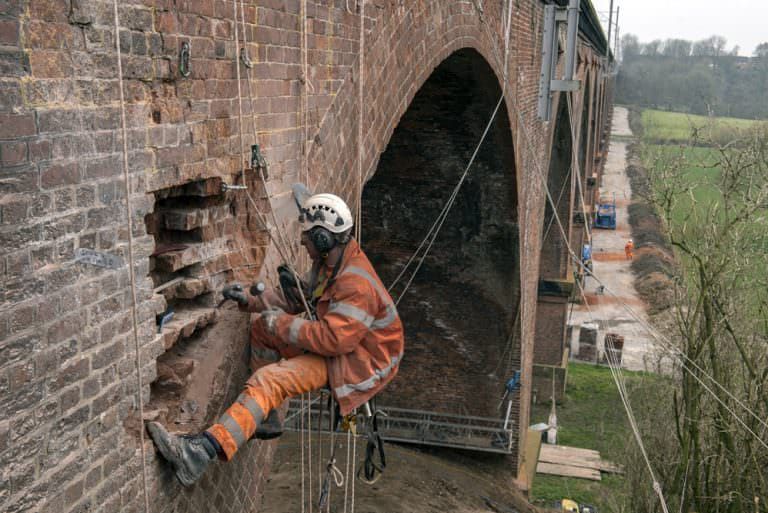
2. Sealant and Caulking Work (with Modifications)
Commercial caulk repair and sealant applications can be performed in cold weather using cold-temperature-compatible materials. However, surface prep becomes even more important, and substrates must be completely dry, which is something that’s not always easy in snow-prone areas like Chicago.
What Should Wait for Warmer Weather?
1. Tuckpointing and Repointing
For commercial masonry tuckpointing in Chicago, surrounding temperatures play a big role in bond strength and moisture evaporation. Even when winter additives are used, best practices recommend waiting until daily temperatures are above 40°F and rising.
2. Facade Restoration and Rebuilding
Unless an area is fully tented and heated, full-scale commercial concrete facade restoration or masonry lintel replacement should typically be deferred. Cold joints, frost within the masonry, and poor curing can all threaten the long-term success of these efforts.

3. Restorative Cleaning
Some restorative masonry cleaning methods, such as those involving low-pressure, low-moisture techniques, can be executed in cold months. However, water-based systems or heavy rinsing should be avoided unless temperatures are consistently above freezing.
Key Considerations for Winter Masonry Work
Use of Temporary Enclosures and Heat
Contractors can build tented enclosures and use indirect heat sources to maintain safe working temperatures. This enables some tasks (like tuckpointing or concrete facade repair) to proceed when absolutely necessary. However, this increases labor and material costs.
Plan Ahead During Design and Bid Phase
We recommend project managers, structural engineers, and architects consider seasonality early in planning. If you're working on specs for commercial concrete facade repair in Chicago or a large-scale concrete balcony restoration project, factor in lead times and the need to mobilize quickly once temperatures allow.
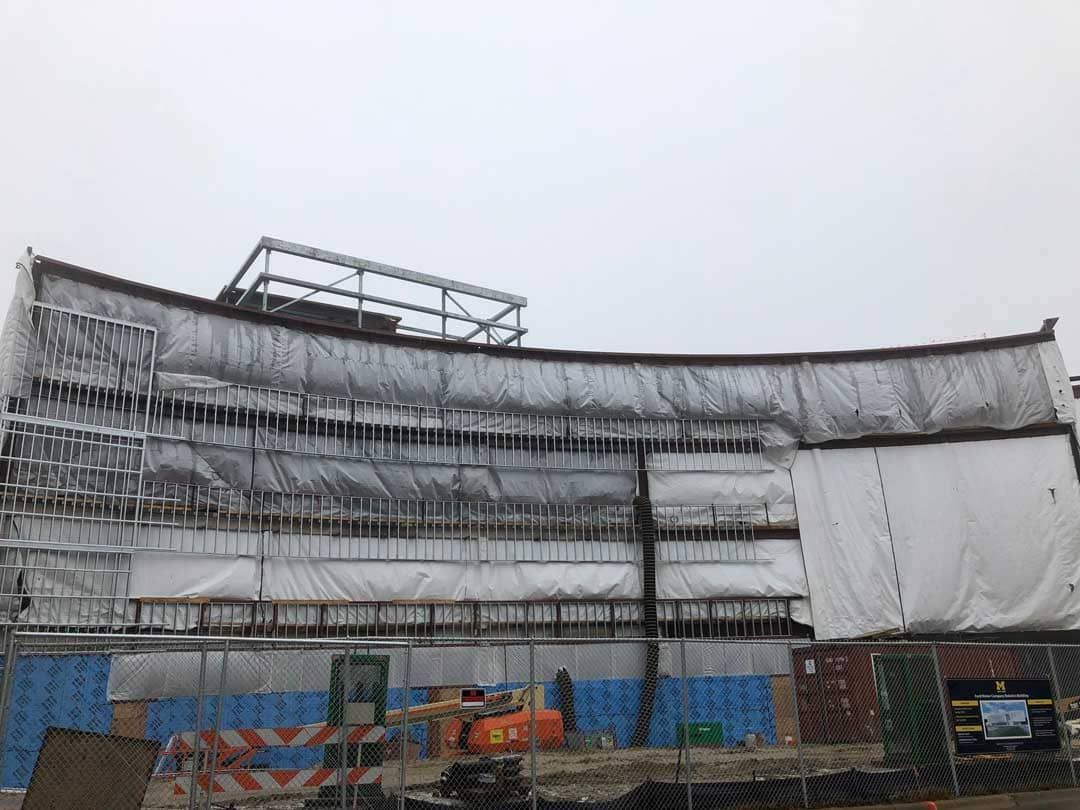
Pro Tips from the Field
- Don’t forget the cure time. Even with heaters, masonry may take longer to cure in cold temps.
- Inspect materials carefully. Stored mortar or sealants can degrade if not kept above recommended temps.
- Coordinate with specialists. A qualified commercial masonry restoration contractor can help assess what’s feasible now vs. what’s better scheduled for spring.
Bottom Line: Work Smarter, Not Colder
Cold weather doesn’t mean all masonry work must stop, but it does require a higher level of planning, technical expertise, and often, creative solutions. At RestoreWorks, we routinely support property managers and general contractors with winter-ready strategies for concrete balcony repair, facade stabilization, and restorative cleaning safety and quality every season.
If you're navigating timelines on a masonry restoration project in Chicago or Northwest Indiana, contact us early. We’ll help you assess what’s needed, develop a seasonal game plan, and avoid expensive surprises.
RestoreWorks is a union masonry restoration contractor specializing in commercial concrete facade repair, masonry lintel replacement, and restorative masonry cleaning across the Chicago area.



